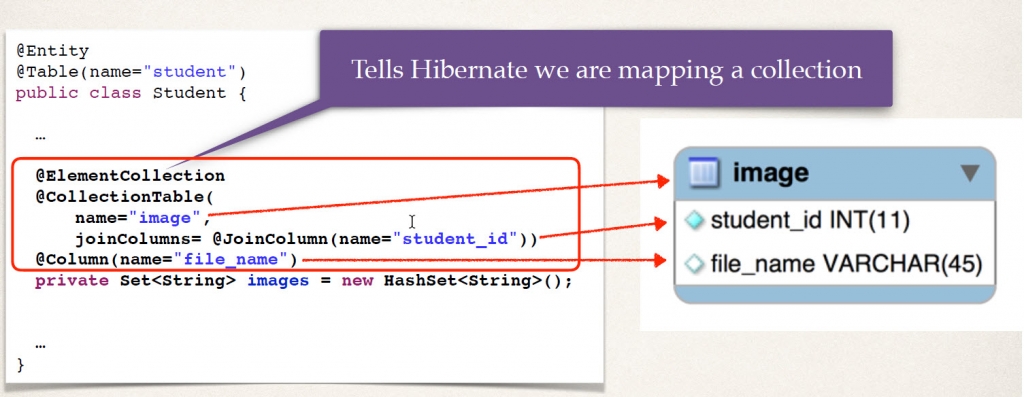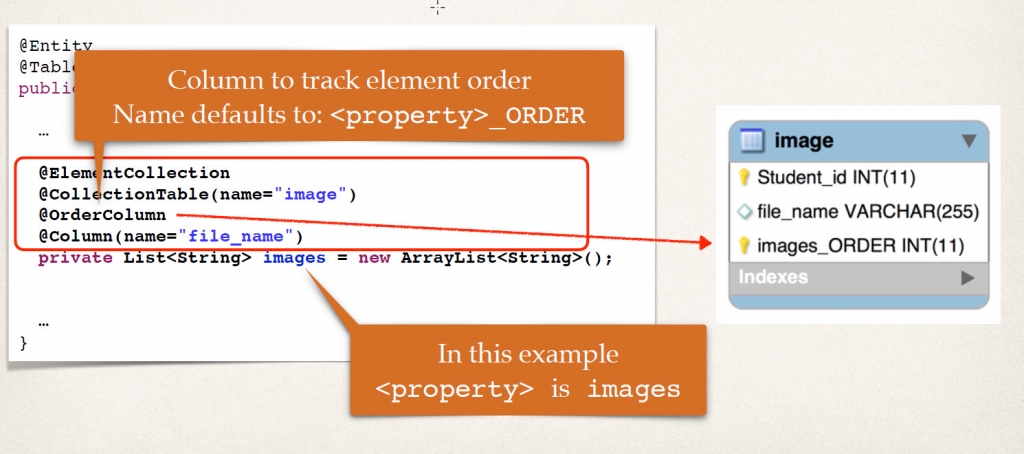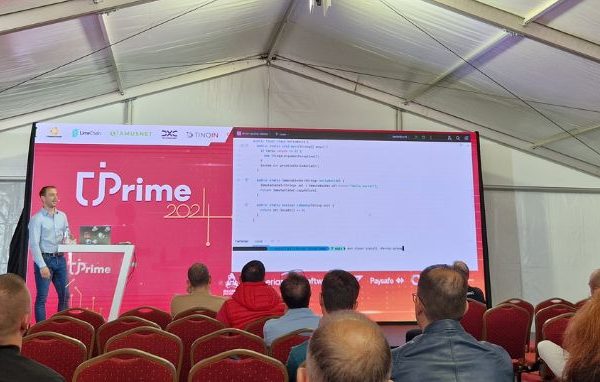As we all know, Hibernate is an Object Relational Mapping (ORM) framework for the Java programming language. This blog post will teach you how to use advanced hibernate techniques for mapping sets, lists and enums in simple and easy steps.
Mapping sets
Set is a collection of objects in which duplicate values are not allowed and the order of the objects is not important. Hibernate uses the following annotation for mapping sets:
- @ElementCollection – Declares an element collection mapping. The data for the collection is stored in a separate table.
- @CollectionTable – Specifies the name of a table that will hold the collection. Also provides the join column to refer to the primary table.
- @Column – The name of the column to map in the collection table.
@ElementCollection is used to define the following relationships: One-to-many relationship to an @Embeddable object and One-to-many relationship to a Basic object, such as Java primitives (wrappers): int, Integer, Double, Date, String, etc…
Now you’re probably asking yourself: Hmmm… How does this compare to @OneToMany?
@ElementCollection is similar to @OneToMany except that the target object is not an @Entity. These annotations give you an еasy way to define a collection with simple/basic objects. But, you can’t query, persist or merge target objects independently of their parent object. ElementCollection does not support a cascade option, so target objects are ALWAYS persisted, merged, removed with their parent object.

Mapping lists
Lists are used when we need to keep track of order position and duplicates of the elements are allowed. Additional annotation that we are going to use here is @OrderColumn, that specified the name of the column to track the element order/position (name defaults to <property>_ORDER):

Mapping maps
When you want to access data via a key rather than integer index, you should probably decide to use maps. Additional annotation used for maps is @MapKeyColumn which helps us to define the name of the key column for a map. Name defaults to <property>_KEY :

Mapping sorted sets
As we mentioned before, the set is an unsorted collection with no duplicates. But what if we don’t need duplicates and the order of retrieval is also important? In that case, we can use @OrderBy and specify the ordering of the elements when a collection is retrieved.
Syntax: @OrderBy(“[field name or property name] [ASC |DESC]”)

Mapping sorted maps
@OrderBy can be also used in maps. In that case, the default value is a key column, ascending.

Mapping Enums
By default, Hibernate maps an enum to a number. This mapping is very efficient, but there is a high risk that adding or removing a value from your enum will change the ordinal of the remaining values. Because of that, you should map the enum value to a String with the @Enumerated annotation. This annotation is used to reference an Enum type and save the field in database as String.

Conclusion
In this article, we have taken a look in the simple techniques for mapping sets, lists and enumerations when we are using Hibernate. I hope you enjoyed reading it and have found it helpful.




